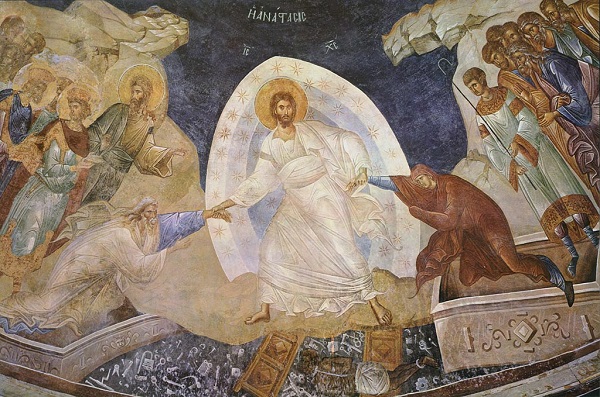The Lord’s Resurrection
16 June 2020Saint Sophrony, from Essex, said that the greatest sin these days is that people have sunk into despair and no longer believe in the resurrection. In the pre-Christian era, and later in the world outside Christianity, there was widespread belief in the immortality of the soul. But even this belief has been abandoned in our own times. Typically, those academics who deal with the human soul don’t treat it as an ontological feature of the person, but rather as a biological function. People today live and die without any particular prospect beyond their biological existence and biographical activities. Within this context, it’s not difficult to understand their widespread pessimism, however much they try to cast it off or make light of it.
Death is our main, most unyielding and most certain threat. It’s a threat that intimidates us not only by its immediate proximity, but also through its indirect and far-reaching presence. It threatens us at every phase and turn of our life and activity, at every illness, every weakness, every danger and every failure. Behind every spiritual and bodily pain and collapse, there lurks the threat of death. We see the same threat in the nature that surrounds us and which is our broader body. At the same time, however, we experience a certain guarded expectancy. In the ceaseless renewal of nature, we see the hope of a resurrection.

In the past, belief in some form of life after death went some way to allay the power of the threat of death. In the age of modernity, however, people wanted to restrict or even extinguish, as far as possible, the threat of death through their faith in unbridled scientific and technological progress. But it was not long before this vision proved to be completely utopian. And so, in our own times, people appear to be exposed to pessimism more than at any other time in the past, despite the inconceivable progress in science and technology.
Even a cursory review of ancient Greek thought and life is sufficient for us to see that belief in the immortality of the soul was a given. Or, as Plato taught, that the body was a prison or grave for the soul and that death was a blessing because it liberated the soul from its bondage. Moreover, Epicurus wanted to free people of the feat of death with the following sophistry: ‘Death’, he said, ‘is the most dreadful of evils’. But that has nothing to do with us, because ‘when we exist, death doesn’t appear and when death appears, we don’t exist’ [1].
We find more profound reflections on death and on life thereafter in the tragic poet Euripides: ‘Who knows whether to die is to live or to live is to die?’. And there are still, to this day, plenty of people who have nothing to do with the Church or religion but who talk about real and bogus life. They say that this life is a sham and ends quickly. Real life is eternal.
When we look back on our life, however long it’s been, it seems very brief. However many the years have been, they’ve flown by. Especially as you get older, the years seem to pass all the more quickly. We often say that they fly by like a dream. And this simile has more than a touch of truth in it. Because, in any case, a dream is also a form of life, sometimes a very intense one. But when we awake to our normal life, we realize that it was a dream, an illusion.
What Euripides posed as a question, what is formed and expressed as a suspicion in the common mind because of the changes which occur due to life and time, what is a secret desire in our heart and is an ontological feature of life itself finds it’s definitive answer in Christianity, with Christ’s resurrection from the dead.
Christ’s resurrection isn’t some amazing event in His life. It’s not a personal occurrence, with no repercussions on the lives of other people. There were other resurrections, also, which are mentioned in Holy Scripture. Lazarus was raised, though four days dead. Others were raised from the dead by Christ and His Apostles. But they all died again and were buried. Christ rose and entered eternity, and in His capacity as a human person, He renewed the whole of our nature and took it with Him: ‘Christ performed the renewal of our nature in His own Person’ [2].
Christ’s resurrection is of capital importance for us. What Christ did and suffered He did and suffered for us, fulfilling ‘the dispensation for us’, and, at the same time, showing the path that each of us should tread in our life. He didn’t sacrifice Himself so that we people could become inert and simply accept salvation passively, but that we should follow Him on the same course, imitating His example and observing His commandments. And apart from us people, the whole of the universe is taken into and renewed in the Person* of Christ, through the grace of the Holy Spirit [3].






